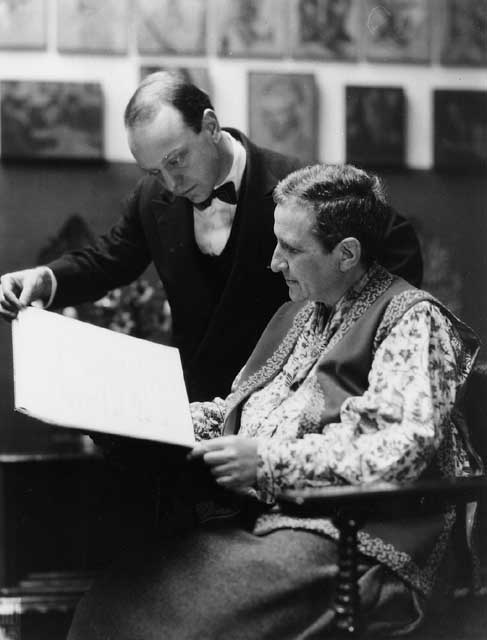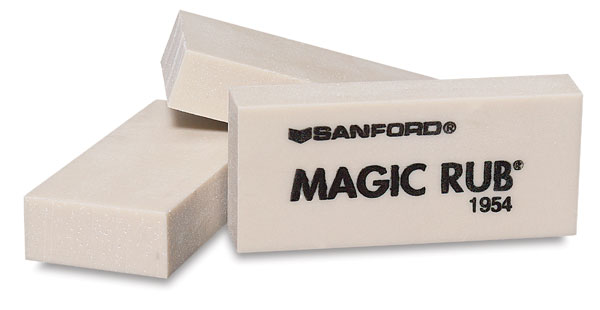Brooke Campbell asked me at lunch the other day how I managed to write a book and an opera libretto in between seeing and reviewing two plays a week. I was tempted to reply by quoting Leonard Bernstein: “I’m extremely humble about whatever gifts I may have, but I am not modest about the work I do. I work extremely hard and all the time.” In fact I don’t work all the time (and neither did Bernstein). It’s true, though, that I often work at times when other, saner people might well choose to do something else.
Last week, for instance, I flew from San Francisco to San Diego, where I met Mrs. T at the train station. I got there an hour ahead of her, so I did the same thing that I’d been doing while waiting for my plane that morning: I planted myself on a bench, booted up my MacBook, and started proofreading the orchestral score of the first four scenes of The Letter. By the time the train arrived, I was done.
Proofreading is one of the aspects of writing an opera (or a book, for that matter) that tends not to get mentioned in interviews. Yet it’s indispensable to the successful realization of the end product. The orchestral score of The Letter consists of 315 pages, each one crammed full of complex musical notation. The seventy-odd members of the Santa Fe Opera pit orchestra will play from individual parts that have been extracted from this score. This means that any mistakes in the version of the score that goes to the printer will be repeated in the orchestra parts. Result: wrong notes, wasted time and money, fast-mounting irritation, last-minute chaos.
 If you think I’m exaggerating, consider the cautionary tale of the first orchestral run-through of Four Saints in Three Acts, at which Virgil Thomson, the composer, was put through the wringer by Alexander Smallens, the conductor. He deserved it, too. Anthony Tommasini tells the story in Virgil Thomson: Composer on the Aisle:
If you think I’m exaggerating, consider the cautionary tale of the first orchestral run-through of Four Saints in Three Acts, at which Virgil Thomson, the composer, was put through the wringer by Alexander Smallens, the conductor. He deserved it, too. Anthony Tommasini tells the story in Virgil Thomson: Composer on the Aisle:
Because there was no budget to hire copyists, Thomson had had to prepare the orchestra score with Maurice Grosser’s help. The previous summer on a Mediterranean island, Porquerolles, he copied out all the individual parts himself, marking the manuscript paper in pencil, averaging ten pages a day. Grosser kept pace, copying over Thomson’s script in ink. There was no piano available to check for accuracy. But Thomson felt he didn’t need one…
The parts contained countless mistakes, as was clear to everyone when the instrumentalists struggled to read through the music for the first time. The hot-tempered Smallens was furious. Thomson, who had been such a bossy perfectionist, was devastated with embarrassment as he made correction after correction, wasting precious time and money.
The extra rehearsal time necessary to make the corrections ended up costing the producers of Four Saints $500, $7,700 in today’s dollars–big money for a small-scale production.
Time and technology, of course, have changed greatly since 1934. Paul Moravec wrote The Letter on an Apple computer, using a program called Sibelius that made it possible for him to create the orchestral score electronically. Using the same program, Subito Music, Paul’s publisher, will generate the orchestral parts for The Letter directly from his digital files instead of hiring copyists to write them out in longhand. By cutting out these once-essential middlemen, Sibelius eliminates the possibility of inadvertent copying errors–but Paul still has to double- and triple-check his electronic “manuscript” to make sure that the notes he wrote were the ones he meant to write. I in turn must read through each page of the score to make sure that Paul has inputted my libretto correctly, including all of the countless revisions that the two of us have made over the past year.
 Needless to say, Paul’s job is far more involved than mine. All I have to do is proof the printed text, which is 7,800 words long, a bit more than half the length of a single chapter of Pops: The Life of Louis Armstrong. Paul, on the other hand, has to sift through hundreds of thousands of musical notes in search of niggling errors, any one of which might turn (say) a minor chord into a major one.
Needless to say, Paul’s job is far more involved than mine. All I have to do is proof the printed text, which is 7,800 words long, a bit more than half the length of a single chapter of Pops: The Life of Louis Armstrong. Paul, on the other hand, has to sift through hundreds of thousands of musical notes in search of niggling errors, any one of which might turn (say) a minor chord into a major one.
I loathe such numbing drudgery, which is why I started doing it as soon as Subito e-mailed me my formatted electronic copy of the proofs of the orchestral score of The Letter. As usual, Shakespeare was right: If it were done when ’tis done, then ’twere well/It were done quickly. So I spent a good-sized chunk of a sunny day in San Diego staring at the screen of my laptop and pecking out messages that read like this: “At measure 370, Hammond’s vocal part should include the stage direction Offstage as before. This direction should not be at measure 378.”
Such labor is far from glamorous, but it’s a not-unimportant part of what you’ll be paying for should you decide to pony up $26 for a cheap seat (or $178 for an expensive one) at the first performance of The Letter.
